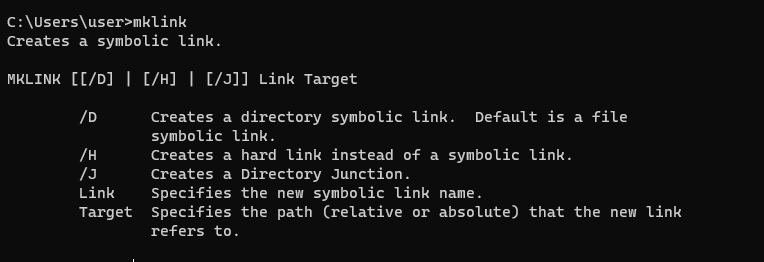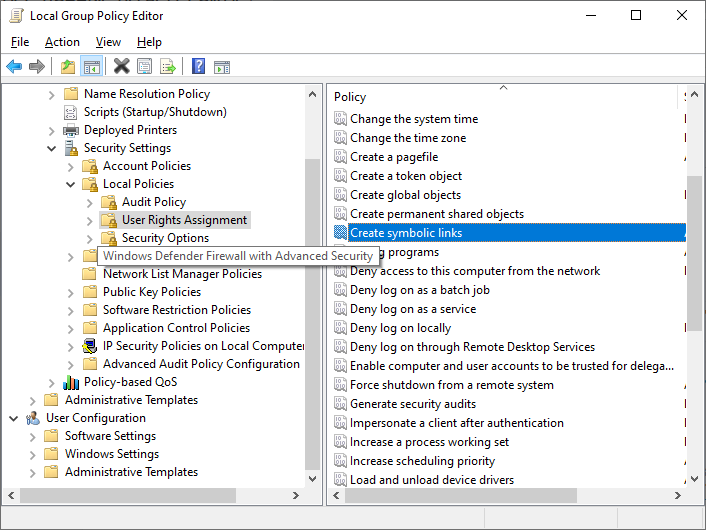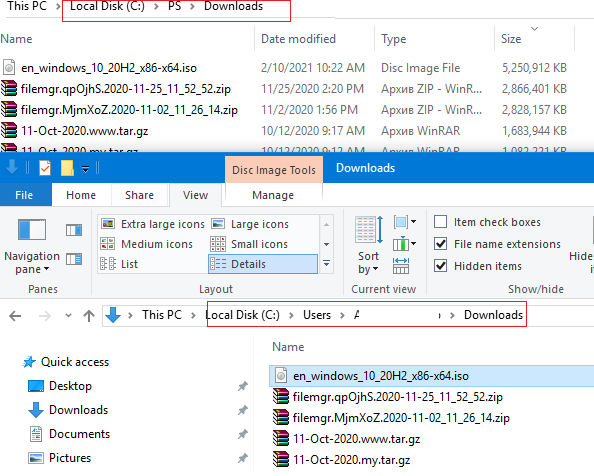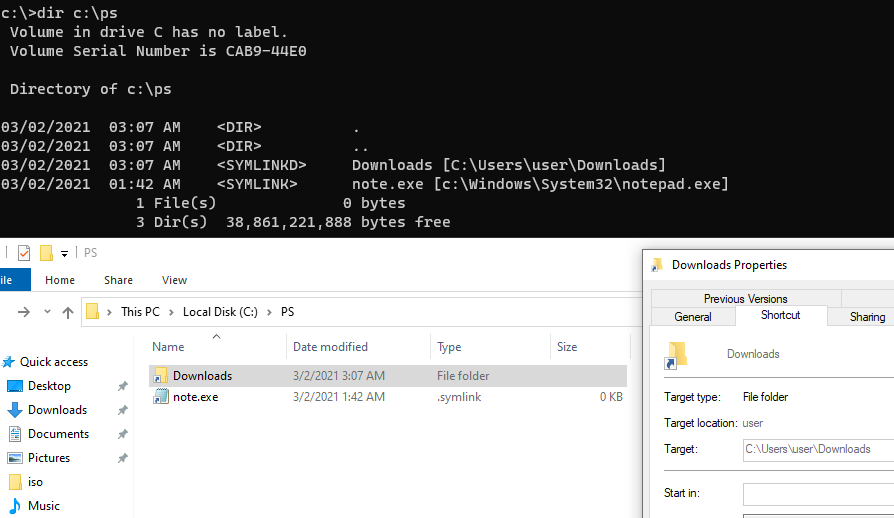- How to Create Symbolic Links (Symlink) in Windows 10
- What Are Symbolic Links?
- Create Symbolic Link Using Link Shell Extension
- Create Symbolic Link Using Mklink
- Creating Symbolic Links
- Example of an Absolute Symbolic Link
- Example of a Relative Symbolic Links
- Create symbolic links
- Reference
- Possible values
- Best practices
- Location
- Default values
- Policy management
- Group Policy
- Command-line tools
- Security considerations
- Vulnerability
- Countermeasure
- Potential impact
- Использование символических ссылок в Windows
- Как создать символическую ссылку в Windows?
- Как найти и вывести все символические ссылки на диске?
How to Create Symbolic Links (Symlink) in Windows 10
Symlinks or Symbolic Links is one of the lesser known, yet useful, features in Windows. You can think of symbolic links as the shortcuts you create in Windows. However, symbolic links are much more powerful and helpful than regular shortcuts. Let’s discuss what symbolic links are and how you can easily create them in Windows 10.
What Are Symbolic Links?
When you create a shortcut for a file or folder, all you are doing is pointing it to that specific file or folder, nothing more. Symbolic links are much more than a simple shortcut. They act as a virtual file or folder that links to the actual file or folder.
When you create a symlink for a file, it appears as if it is the actual file when in reality it is redirecting you toward the real file in the background. Besides files, you can also create symlinks for folders. Simply put, a symlink is nothing more than a build of the text string which lets the operating system know that it is just a path for another file or folder.
For instance, most cloud service apps you install will only sync files and folders located in their own folder. But there will be times when you might have a folder in some other drive you want to sync with the cloud storage service.
However, you don’t want to move the folder from its actual location or don’t want to create a copy of the folder. In those situations you can simply create a symlink in the cloud service folder so that you can sync the contents of the target folder without actually moving or copying the real folder.
Since a symlink is just a virtual folder that just acts as a path to the real folder, you don’t have to worry about the symlink consuming your disk space.
Create Symbolic Link Using Link Shell Extension
If you don’t want to faff around in the Command Prompt and are prepared to faff around a little bit by installing a tool that lets you create symlinks to an existing file or directory using the right-click context menu, then try the following. Link Shell Extension is a tool that lets you create hardlinks and symbolic links by right-clicking whatever folder you want to create a link to.
There are a few hoops with the installation. You’ll get a warning that it can’t be downloaded securely, and Windows Defender may warn you that it’s “unsigned.”
We can assure you that the tool is safe. Go ahead and install it. During installation, explorer.exe will restart, so make sure you have important stuff backed up.
Once LSE is installed, right-click the target file or folder you want to create a symlink to, then click “Pick Link Source.”
Next, go to the folder where you want the symlink to appear, right-click it, then select “Drop As -> Symbolic Link.”
Create Symbolic Link Using Mklink
Note: though I’m showing this in Windows 10, the commands shown here are applicable to Windows Vista and up.
Creating symlinks in Windows is pretty easy with the mklink command. To start, press Win + X , then select the option “Command Prompt (Admin)” to open the Command Prompt with admin rights.
Once the command prompt has been opened, use the below command format to create a symlink for a file.
In my case, I want to create a symlink in the E drive for a text file located on the F drive, so the command looks something like this:
The first path you see in the above command is where you will create your symlink. This path is called a “Link.” The second path belongs to the actual file on your disk and is called “Target.”
Once the symlink has been created, this is how it looks in the File Explorer. Though the icon looks like a regular shortcut, it is a symlink.
Along with individual files, you can create symlinks for entire directories. To do that, use the below command. The switch /D allows you to do this.
As soon as you execute the command, the symlink will be created for the target directory. You can use it to access all the files and folders inside the real folder. If you ever want to, you can delete the symbolic link like any other file or folder. Just select the symlink, press the delete key on your keyboard, and you are good to go.
And you’re done! If you want to do more under-the-hood tweaking in Windows 10, see our list of the best registry hacks. Also, check out our guide on how to get Mac-style hot corners in Windows 10.
Creating Symbolic Links
The function CreateSymbolicLink allows you to create symbolic links using either an absolute or relative path.
Symbolic links can either be absolute or relative links. Absolute links are links that specify each portion of the path name; relative links are determined relative to where relative–link specifiers are in a specified path. Relative links are specified using the following conventions:
Dot (. and ..) conventions—for example, «..\» resolves the path relative to the parent directory.
Names with no slashes ()—for example, «tmp» resolves the path relative to the current directory.
Root relative—for example, «\Windows\System32» resolves to the «current drive:\Windows\System32″. directory
Current working directory-relative—for example, if the current working directory is «C:\Windows\System32», «C:File.txt» resolves to «C:\Windows\System32\File.txt».
Note  If you specify a current working directory–relative link, it is created as an absolute link, due to the way the current working directory is processed based on the user and the thread.
A symbolic link can also contain both junction points and mounted folders as a part of the path name.
Symbolic links can point directly to a remote file or directory using the UNC path.
Relative symbolic links are restricted to a single volume.
Example of an Absolute Symbolic Link
In this example, the original path contains a component, ‘x‘, which is an absolute symbolic link. When ‘x‘ is encountered, the fragment of the original path up to and including ‘x‘ is completely replaced by the path that is pointed to by ‘x‘. The remainder of the path after ‘x‘ is appended to this new path. This now becomes the modified path.
Link: «absLink» maps to «\\machineB\share»
Modified Path: «\\machineB\share\gamma\file»
Example of a Relative Symbolic Links
In this example, the original path contains a component ‘x‘, which is a relative symbolic link. When ‘x‘ is encountered, ‘x‘ is completely replaced by the new fragment pointed to by ‘x‘. The remainder of the path after ‘x‘, is appended to the new path. Any dots (..) in this new path replace components that appear before the dots (..). Each set of dots replace the component preceding. If the number of dots (..) exceed the number of components, an error is returned. Otherwise, when all component replacement has finished, the final, modified path remains.
Link: «link» maps to «..\..\theta»
Modified Path: «C:\alpha\beta\..\..\theta\gamma\file»
Create symbolic links
Applies to
Describes the best practices, location, values, policy management, and security considerations for the Create symbolic links security policy setting.
Reference
This user right determines if users can create a symbolic link from the device they are logged on to.
A symbolic link is a file-system object that points to another file-system object. The object that’s pointed to is called the target. Symbolic links are transparent to users. The links appear as normal files or directories, and they can be acted upon by the user or application in exactly the same manner. Symbolic links are designed to aid in migration and application compatibility with UNIX operating systems. Microsoft has implemented symbolic links to function just like UNIX links.
Warning:В В В This privilege should only be given to trusted users. Symbolic links can expose security vulnerabilities in applications that aren’t designed to handle them. Constant: SeCreateSymbolicLinkPrivilege
Possible values
- User-defined list of accounts
- Not Defined
Best practices
- Only trusted users should get this user right. Symbolic links can expose security vulnerabilities in applications that are not designed to handle them.
Location
Computer Configuration\Windows Settings\Security Settings\Local Policies\User Rights Assignment
Default values
By default, members of the Administrators group have this right.
The following table lists the actual and effective default policy values. Default values are also listed on the policy’s property page.
| Server type or GPO | Default value |
|---|---|
| Default Domain Policy | Not Defined |
| Default Domain Controller Policy | Not Defined |
| Stand-Alone Server Default Settings | Not Defined |
| Domain Controller Effective Default Settings | Administrators |
| Member Server Effective Default Settings | Administrators |
| Client Computer Effective Default Settings | Administrators |
Policy management
This section describes different features and tools available to help you manage this policy.
A restart of the device is not required for this policy setting to be effective.
Any change to the user rights assignment for an account becomes effective the next time the owner of the account logs on.
Group Policy
Settings are applied in the following order through a Group Policy Object (GPO), which will overwrite settings on the local computer at the next Group Policy update:
- Local policy settings
- Site policy settings
- Domain policy settings
- OU policy settings
When a local setting is greyed out, it indicates that a GPO currently controls that setting.
Command-line tools
This setting can be used in conjunction with a symbolic link file system setting that can be manipulated with the command-line tool to control the kinds of symlinks that are allowed on the device. For more info, type fsutil behavior set symlinkevaluation /? at the command prompt.
Security considerations
This section describes how an attacker might exploit a feature or its configuration, how to implement the countermeasure, and the possible negative consequences of countermeasure implementation.
Vulnerability
Users who have the Create symbolic links user right could inadvertently or maliciously expose your system to symbolic link attacks. Symbolic link attacks can be used to change the permissions on a file, to corrupt data, to destroy data, or as a DoS attack.
Countermeasure
Do not assign the Create symbolic links user right to standard users. Restrict this right to trusted administrators. You can use the fsutil command to establish a symbolic link file system setting that controls the kind of symbolic links that can be created on a computer.
Potential impact
None. Not defined is the default configuration.
Использование символических ссылок в Windows
Символическая ссылка (симлинк, символьная ссылка, Symbolic link) это специальный файл на файловой системе, которые сам не содержит данных, а является по сути ярлыком, указывающим на какой-то другой объект (файл или папку). При обращении к симлику операционная система считает, что это оригинальный файл (папка) и работает с ними совершенно прозрачно.
Символические ссылки используются в Windows довольно часто для системных файлов и каталогов. Пользователь может их применять, когда нужно перенести часть “тяжелых” файлов на другой диск, но чтобы Windows считала, что файлы все еще находятся в исходном каталоге (например в ситуациях, когда нужно экономить место на SSD, перенеся некоторые каталоги на более медленный и емкий SSD, не нарушая работоспособности программ). Можно использовать симлинки на SMB файловом сервере, когда каталоги с разных LUN должны быть доступны через одну точку входа.
В Windows есть три типа файловых ссылок для NTFS томов: жесткие, мягкие (симлинки), точки соединения (Junction point).
- Hard Links (жесткие ссылки) – могут указывать только на локальный файл, но не на папку. Такой файл – это ссылка на другой файла на этом же диске без фактического дублирования самого файла. У него отображается такой же размер и свойства, как у целевого файла (но реальное место на диске он не занимает);
- Junction Points (Directory Hard Link, точка соединения) – могут указывать только на папку (на этом же или на другом разделе);
- Symbolic Links (мягкая ссылка, симлинк) – могут указывать на локальный файл, папку и сетевой каталог на удаленном компьютере (UNC), поддерживаются относительные пути.
В подавляющем большинстве случаев вам будет достаточно функционала symbolic link, как наиболее универсального средства создания ссылки на любой объект.
Как создать символическую ссылку в Windows?
Для создания символических и жестких ссылок в Windows можно использовать встроенную утилиты mklink или PowerShell.
Синтаксис у утилиты mklink простой. Чтобы создать символическую ссылку на файл, нужно указать имя ссылки и целевой объект, на который она должна указывать. Можно указать тип ссылки: /D — символьная (мягкая) ссылка на каталог, /H — жесткая ссылка, /J – точка соединения (Junction point).
Если вам нужно разрешить создавать символические ссылки обычным пользователям, нужно добавить группу пользователей в параметр групповой политики Create Symbolic Links (Computer configuration -> Window Settings -> Security settings -> User Rights Assignment в редакторе GPO). По умолчанию в этой политике добавлена только локальная группа «Administrators». Обновите локальные политики после изменения параметра: gpupdate /force
Создадим в каталоге C:\PS символическую ссылку на файл notepad.exe:
mklink C:\PS\note.exe c:\Windows\System32\notepad.exe
Должно появится сообщение:
Теперь для запуска процесса notepad.exe можно использовать символическую ссылку note.exe.
Теперь создадим в этом каталоге симлинк на другой каталог на этом же диcке:
mklink /D “C:\PS\Downloads” “C:\Users\user\Downloads”
Теперь при переходе в каталог C:\PS\Downloads вы будете видеть содержимое каталога, на который он ссылается.
Выведем содержимое каталога C:\PS:
Как вы видите, в атрибутах некоторых файлов указано, что это symlink/simlinkd. Также указан объект, на который они ссылаются. В Windows File Explorer симлинки отображаются с иконками ярлыков, а в их свойствах можно посмотреть целевой объект на который они ссылаются.
Также можно создать символически ссылки в Windows 10 с помощью PowerShell (в этом примере я использую относительные пути, чтобы создать символическую ссылку):
New-Item -ItemType SymbolicLink -Path «.\test\tmpfiles» -Target «..\tmp\files»
Можно создать символическую ссылку на сетевую папку на удаленном компьютере/сервере. Адрес сетевой папки нужно указывать в формате UNC. Следующий пример создаст симлинк на сетевой каталог на сервере:
mklink /D c:\ps\share \\mskfs01\Share
Например, подключим административную шару C$ с удаленного компьютера по IP адресу:
mklink /D c:\remotePC\server1 \\192.168.31.15\С$
Если при доступе к сетевой папке через симлинк, вы получили ошибку
проверьте разрешенные способы использования символических ссылок на вашем компьютере:
fsutil behavior query SymlinkEvaluation
Чтобы включить использование символических ссылок на удаленные ресурсы, выполните команды:
fsutil behavior set SymlinkEvaluation R2R:1
fsutil behavior set SymlinkEvaluation R2L:1
Вы можете работать с символическими ссылками, как с обычными объектами файловой системы, можно переименовать, переносить или удалить их. Система автоматически изменит настройки таких симлинков, чтобы они указывали на верные целевые объекты.
Для удаления симлинков используются обычные команды, как и для удаления файлов:
Del c:\ps\note.exe
RD c:\ps\downloads
Как найти и вывести все символические ссылки на диске?
В Windows нет простых инструментов для просмотра и управления всеми симлинками на диске.
Вы можете вывести список всех символических ссылок на диске с помощью команды:
dir /AL /S C:\ | find «SYMLINK»
- /A – вывести файлы с атрибутом L (симлинк);
- /S –выполнить команду рекурсивно для всех вложенных каталогов;
- C:\ — укажите имя диска, на котором нужно найти все символические ссылки (если вы не хотите сканировать весь диск, укажите путь к нужному каталогу)
Также можно вывести список всех символических ссылок на диске с помощью PowerShell. Для этого нужно просканировать все каталоги и найти NTFS объекты с атрибутом ReparsePoint:
Get-ChildItem -Path C:\ -Force -Recurse -ErrorAction ‘silentlycontinue’ | Where




















